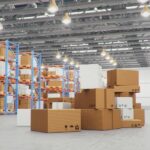Not every innovation comes with blinking lights or futuristic packaging. Some of the most game-changing tools in modern logistics are nearly invisible. Take smart labels — small, sticker-like sensors that look ordinary but quietly change how products move, how problems are caught, and how entire systems operate.
You don’t have to overhaul your warehouse to use them. You don’t need a robotics team. And yet, they’re making waves in supply chains, from food to pharmaceuticals to retail. Let’s unpack how something so small can have such a big impact.
1. Labels That Do More Than Stick
For decades, labels have done the basics — provide a barcode, a destination, maybe some handling instructions. They’ve been passive, a one-way form of communication. But smart labels flip the script. They collect and send information. They tell stories — where something has been, what it’s experienced, and whether something needs attention.
2. Quiet Tech, Big Results
The beauty of smart labels lies in how easily they fit into what companies are already doing. They don’t ask for new systems or complex installs — they just peel and stick. Yet within that simplicity, there’s real intelligence. Smart labels by Trackonomy are a great example — they combine simple form with subtle tracking capabilities like temperature sensing and movement detection. It’s not loud tech. It’s tech that fits in and helps from the background.
3. Catching Problems Before They Spread
Think of a cold chain shipment. If the temperature gets too high during transport, the whole shipment could be compromised. Without smart labels, that issue might go unnoticed until it’s too late. But with real-time sensing, a smart label can flag a temperature breach immediately. That alert can trigger a reroute, a quality check, or even a recall — before the product ever hits the shelf.
4. Reducing Waste One Scan at a Time
Lost, spoiled, or misrouted inventory is expensive — for both businesses and the environment. Smart labels help reduce that waste. By keeping better tabs on each item, companies can avoid over-ordering, unnecessary repackaging, or dumping goods that could’ve been saved with earlier intervention. It’s a small change with ripple effects across the system.
5. Enhancing Traceability Without the Headache
Compliance is a huge deal in industries like healthcare, electronics, and food. But traditional methods of traceability can be paperwork-heavy and error-prone. Smart labels automate much of that process. Each label acts as a data log, tracking key conditions and handoffs. If a regulator or customer asks, there’s a clean digital trail to show where an item’s been — and how it got there.
6. Making Packaging Smarter Without Reinventing It
One reason smart labels are gaining traction is that they work with existing packaging. You don’t need to redesign boxes or pallets. A single sticker or strip can add intelligence to something as ordinary as a cardboard box. It’s innovation through augmentation — not disruption.
7. Turning Passive Inventory into Active Feedback
In traditional logistics, products sit in warehouses or transit with no voice. If something goes wrong, it’s often discovered too late. Smart labels change that by giving inventory a kind of passive feedback loop. A shipment that’s dropped, jostled, or stored improperly can report that — instantly. That’s not just useful info — it’s peace of mind.
8. Empowering Frontline Workers
Smart labels don’t just help managers or planners. They help the people doing the actual work. Drivers can receive alerts about tampered packages. Warehouse staff can scan and verify conditions without opening boxes. Retail workers can confirm shelf-life or freshness at a glance. It’s not about replacing jobs — it’s about making those jobs easier and more precise.
9. Scaling Smart Without Going Broke
High-tech solutions often come with high-tech price tags. But smart labels buck that trend. They’re relatively affordable, especially when you factor in the savings they unlock. That means even smaller companies — not just global giants — can start using them at scale. You don’t need to track every box in the building. You just need to start with the most critical.
10. A New Standard for the Everyday
What used to be “nice-to-have” — real-time tracking, condition alerts, digital documentation — is quickly becoming the norm. Customers expect visibility. Regulators demand accountability. Businesses want fewer blind spots. Smart labels make all of that possible, without needing to build something from scratch. They’re reshaping what’s possible in logistics, not with flash, but with quiet reliability.
Final Thoughts
There’s something fascinating about how small the smart label is — and how big its impact can be. It’s a reminder that not all innovation is loud or complex. Sometimes, the smartest tools are the ones that simply do their job, quietly and consistently, right where they’re needed.
From tracking a single box to transforming entire workflows, smart labels are proving that tiny tech can carry a lot of weight.

















